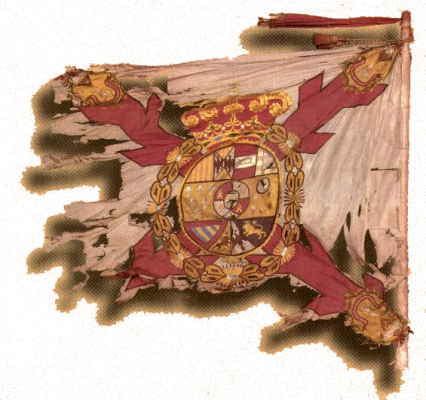History of the Canarian flag
Historical antecedents
Throughout most of their history the Canary Islands have lacked a flag to represent the islands as a whole.
The first evidences of flags linked with the Canaries are the banners shown in the drawings illustrating the manuscripts of Le Canarien, common title of the two chronicles on the conquest of the islands by Jéan de Béthencourt and Gadifer de La Salle.
Later on, when the Castilian Crown undertook the conquest, it was carried out in each island under a different ensign, the Banners of the Conquest, those still preserved being those of Fuerteventura, Gran Canaria, Tenerife and La Palma, though probably the one from Gran Canaria is the only really dating back from those days.
As a symbol of their links with the Monarchy, in the main towns existed royal standards or guidons, such as the so-called "general flag", that the councilor Pedro de Vergara delivered to Francisco de Valcárcel, Alferez Mayor (high standard-bearer) of Tenerife, on 17 January 1561. It was made of white, blue and yellow silk and with a red cross, the first three colours coinciding with those of the current Canarian flag, a fact that, lacking any other data, can only be qualified as an astonishing historical coincidence. Some days later, the said Alferez Mayor also received the royal banner, made of red silk, having on one side the image of the Virgen de Candelaria (Our Lady of the Candlemas, patron saint of Tenerife) and on the other the royal arms. He also received the royal guidon with the arms of Castille embroidered in gold, silver and silk, with yellow edges.
Apart from these first examples of private and/or royal ensigns, throughout the following centuries the archipelago was not to know any more flags than those common to all the territories ruled by the Spanish monarchy, as can be seen in the flags of the Canarian Provincial Corps preserved in the Regional Military Museum (Santa Cruz de Tenerife), all dating from the 18th century.

